#muchado
Explore tagged Tumblr posts
Text

"Well, I've never heard of the second one" - David Tennant, probably
#much ado about nothing#NMTDaily#NMTD#nothing much to do#maan#muchado#shakespeare#william shakespeare#book club#substack#dracula daily#classic literature#liw#literary inspired webseries#MG#david tennant#catherine tate#jake mcgregor#harriett maire#doctor who
137 notes
·
View notes
Text
My head canon is absolutely that both couples already love each other before the play begins but still you'd think the couple in denial would be the tricky one...
Much Ado About Nothing is really funny bc it’s a Shakespeare play where one of the couples already love each other before the play begins and one of them start the show by calling each other brainless backstabbing insufferable whores and you’d think the ones that like each other would be the easier ones to get together but Here’s The Thing
4K notes
·
View notes
Text

Happy's Place 1.13 - Mama Drama Quality : HD screencaptures Amount : 569 files Resolution : 1280x720px
- Please like/reblog if using!
#happy's place#happysplaceedit#melissa peterman#reba mcentire#rex linn#belissa escobedo#pablo castelblanco#tokala black elk#justina muchado#capped by randomkiwibirds
3 notes
·
View notes
Text
New fic alert! 😁 Just in time for Valentine's Day, here's Much Ado About Omens!
It's the GO/MuchAdo mashup nobody asked for but my brain insisted on making anyhow. It's silly, snarky, fluffy, and eventually smutty, and has a whole basket of Easter eggs.
Endless gratitude to @missunderstoodlyrics and @curiouspupsicle for their beta help!
#they're idiots your honor#bicker-flirting#good omens fanfiction#Shakespeare fanfiction#good omens#shakespeare#much ado about nothing#good omens 2#ao3 fanfic
19 notes
·
View notes
Text
(Mostly) Lost, but Not Forgotten: Omar Khayyam (1923) / A Lover’s Oath (1925)

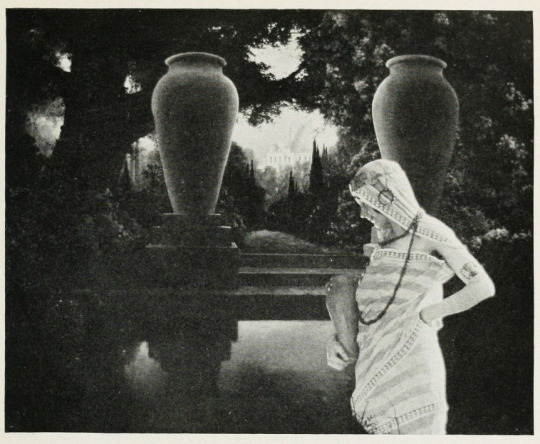
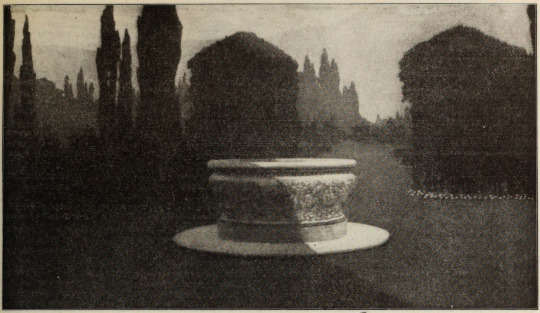

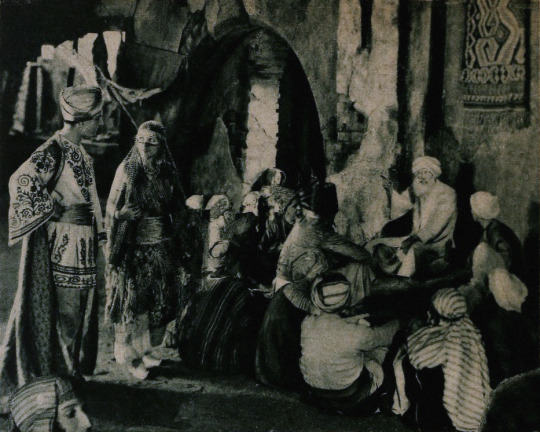
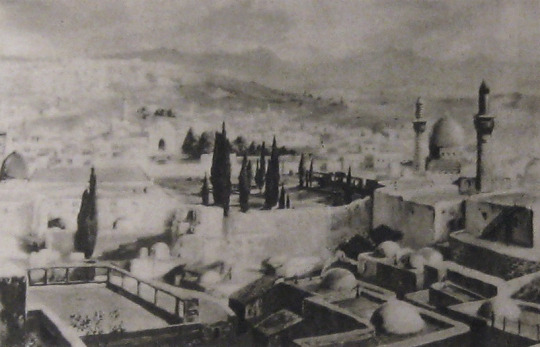

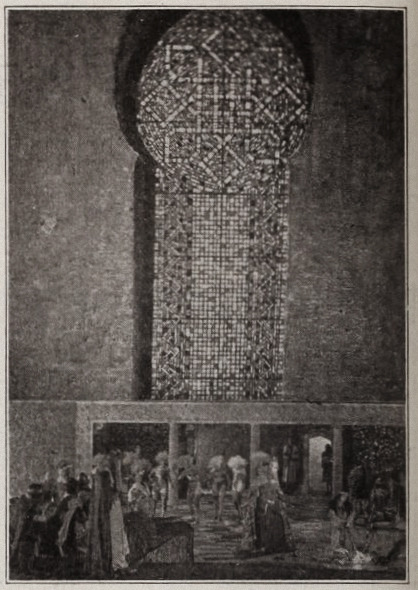
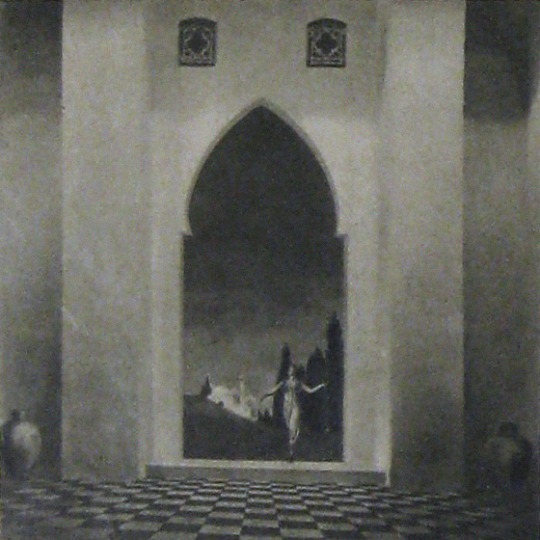
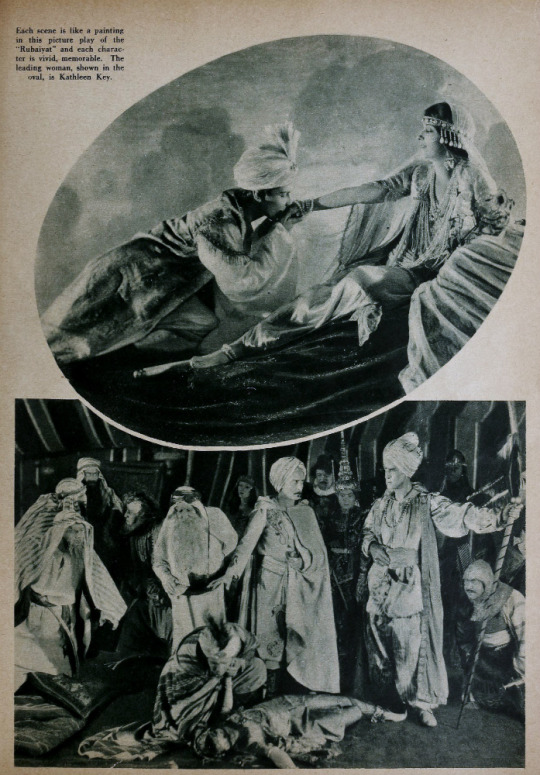
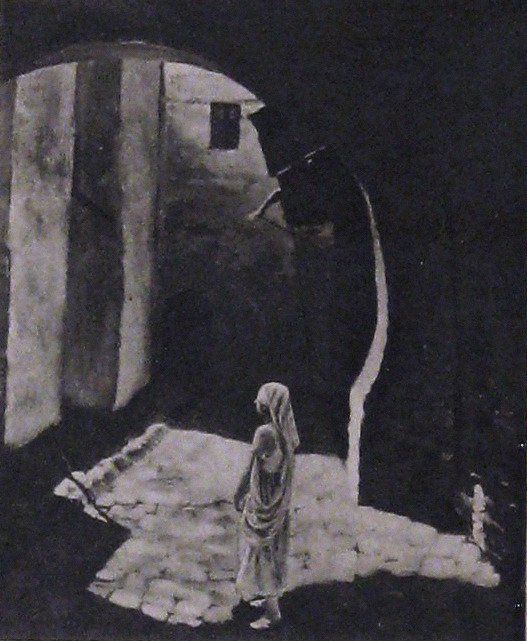

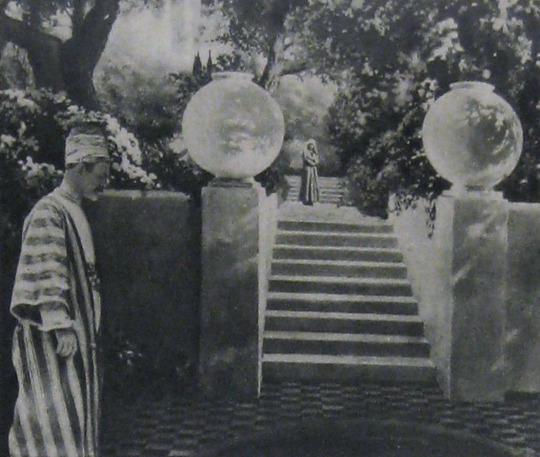
Alternate Titles: The Rubaiyat of Omar Khayyam, The Rubaiyat, Omar Khayyam, Omar
Direction: Ferdinand Pinney Earle; assisted by Walter Mayo
Scenario: Ferdinand P. Earle
Titles: Marion Ainslee, Ferdinand P. Earle (Omar), Louis Weadock (A Lover’s Oath)
Inspired by: The Rubaiyat of Omar Khayyam, as edited & translated by Edward FitzGerald
Production Manager: Winthrop Kelly
Camera: Georges Benoit
Still Photography: Edward S. Curtis
Special Photographic Effects: Ferdinand P. Earle, Gordon Bishop Pollock
Composer: Charles Wakefield Cadman
Editors: Arthur D. Ripley (The Rubaiyat of Omar Khayyam version), Ethel Davey & Ferdinand P. Earle (Omar / Omar Khayyam, the Director’s cut of 1922), Milton Sills (A Lover’s Oath)
Scenic Artists: Frank E. Berier, Xavier Muchado, Anthony Vecchio, Paul Detlefsen, Flora Smith, Jean Little Cyr, Robert Sterner, Ralph Willis
Character Designer: Louis Hels
Choreography: Ramon Novarro (credited as Ramon Samaniegos)
Technical Advisors: Prince Raphael Emmanuel, Reverend Allan Moore, Captain Dudley S. Corlette, & Captain Montlock or Mortlock
Studio: Ferdinand P. Earle Productions / The Rubaiyat, Inc. (Production) & Eastern Film Corporation (Distribution, Omar), Astor Distribution Corporation [States Rights market] (Distribution, A Lover’s Oath)
Performers: Frederick Warde, Edwin Stevens, Hedwiga Reicher, Mariska Aldrich, Paul Weigel, Robert Anderson, Arthur Carewe, Jesse Weldon, Snitz Edwards, Warren Rogers, Ramon Novarro (originally credited as Ramon Samaniegos), Big Jim Marcus, Kathleen Key, Charles A. Post, Phillippe de Lacy, Ferdinand Pinney Earle
Premiere(s): Omar cut: April 1922 The Ambassador Theatre, New York, NY (Preview Screening), 12 October 1923, Loew’s New York, New York, NY (Preview Screening), 2 February 1923, Hoyt’s Theatre, Sydney, Australia (Initial Release)
Status: Presumed lost, save for one 30 second fragment preserved by the Academy Film Archive, and a 2.5 minute fragment preserved by a private collector (Old Films & Stuff)
Length: Omar Khayyam: 8 reels , 76 minutes; A Lover’s Oath: 6 reels, 5,845 feet (though once listed with a runtime of 76 minutes, which doesn’t line up with the stated length of this cut)
Synopsis (synthesized from magazine summaries of the plot):
Omar Khayyam:
Set in 12th century Persia, the story begins with a preface in the youth of Omar Khayyam (Warde). Omar and his friends, Nizam (Weigel) and Hassan (Stevens), make a pact that whichever one of them becomes a success in life first will help out the others. In adulthood, Nizam has become a potentate and has given Omar a position so that he may continue his studies in mathematics and astronomy. Hassan, however, has grown into quite the villain. When he is expelled from the kingdom, he plots to kidnap Shireen (Key), the sheik’s daughter. Shireen is in love with Ali (Novarro). In the end it’s Hassan’s wife (Reicher) who slays the villain then kills herself.
A Lover’s Oath:
The daughter of a sheik, Shireen (Key), is in love with Ali (Novarro), the son of the ruler of a neighboring kingdom. Hassan covets Shireen and plots to kidnap her. Hassan is foiled by his wife. [The Sills’ edit places Ali and Shireen as protagonists, but there was little to no re-shooting done (absolutely none with Key or Novarro). So, most critics note how odd it is that all Ali does in the film is pitch woo, and does not save Shireen himself. This obviously wouldn’t have been an issue in the earlier cut, where Ali is a supporting character, often not even named in summaries and news items. Additional note: Post’s credit changes from “Vizier” to “Commander of the Faithful”]
Additional sequence(s) featured in the film (but I’m not sure where they fit in the continuity):
Celestial sequences featuring stars and planets moving through the cosmos
Angels spinning in a cyclone up to the heavens
A Potters’ shop sequence (relevant to a specific section of the poems)
Harem dance sequence choreographed by Novarro
Locations: palace gardens, street and marketplace scenes, ancient ruins
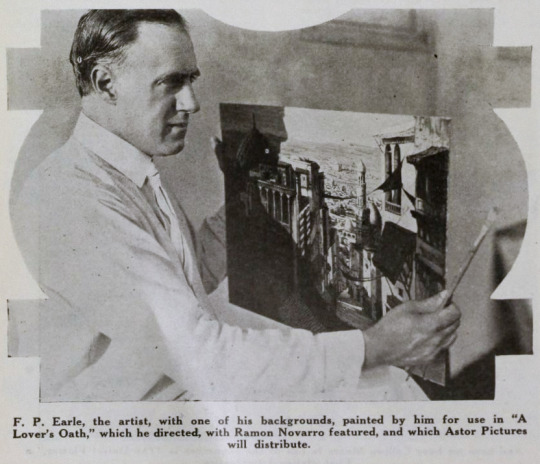
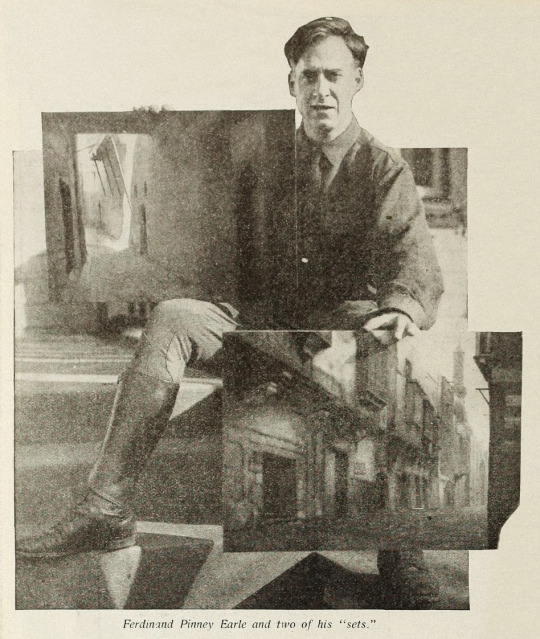
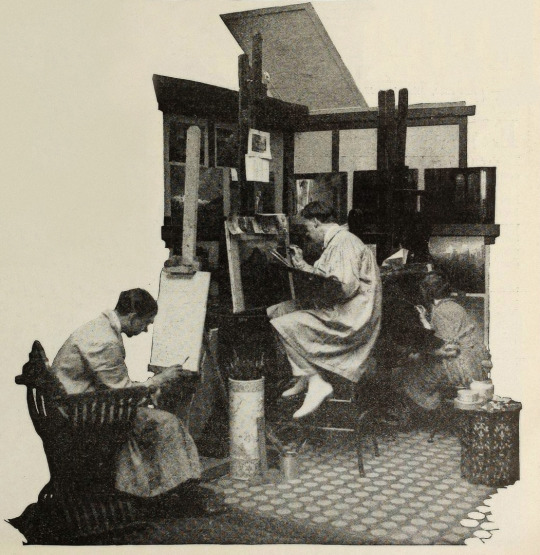


Points of Interest:
“The screen has been described as the last word in realism, but why confine it there? It can also be the last word in imaginative expression.”
Ferdinand P. Earle as quoted in Exhibitors Trade Review, 4 March 1922
The Rubaiyat of Omar Khayyam was a massive best seller. Ferdinand Pinney Earle was a classically trained artist who studied under William-Adolphe Bougueraeu and James McNeill Whistler in his youth. He also had years of experience creating art backgrounds, matte paintings, and art titles for films. Charles Wakefield Cadman was an accomplished composer of songs, operas, and operettas. Georges Benoit and Gordon Pollock were experienced photographic technicians. Edward S. Curtis was a widely renowned still photographer. Ramon Novarro was a name nobody knew yet—but they would soon enough.
When Earle chose The Rubaiyat as the source material for his directorial debut and collected such skilled collaborators, it seemed likely that the resulting film would be a landmark in the art of American cinema. Quite a few people who saw Earle’s Rubaiyat truly thought it would be:
William E. Wing writing for Camera, 9 September 1922, wrote:
“Mr. Earle…came from the world of brush and canvass, to spread his art upon the greater screen. He created a new Rubaiyat with such spiritual colors, that they swayed.” … “It has been my fortune to see some of the most wonderful sets that this Old Earth possesses, but I may truly say that none seized me more suddenly, or broke with greater, sudden inspiration upon the view and the brain, than some of Ferdinand Earle’s backgrounds, in his Rubaiyat. “His vision and inspired art seem to promise something bigger and better for the future screen.”
As quoted in an ad in Film Year Book, 1923:
“Ferdinand Earle has set a new standard of production to live up to.”
Rex Ingram
“Fifty years ahead of the time.”
Marshall Neilan
The film was also listed among Fritz Lang’s Siegfried, Chaplin’s Gold Rush, Fairbanks’ Don Q, Lon Chaney’s Phantom of the Opera and The Unholy Three, and Erich Von Stroheim’s Merry Widow by the National Board of Review as an exceptional film of 1925.
So why don’t we all know about this film? (Spoiler: it’s not just because it’s lost!)
The short answer is that multiple dubious legal challenges arose that prevented Omar’s general release in the US. The long answer follows BELOW THE JUMP!
Earle began the project in earnest in 1919. Committing The Rubaiyat to film was an ambitious undertaking for a first-time director and Earle was striking out at a time when the American film industry was developing an inferiority complex about the level of artistry in their creative output. Earle was one of a number of artists in the film colony who were going independent of the emergent studio system for greater protections of their creative freedoms.
In their adaptation of The Rubaiyat of Omar Khayyam, Earle and Co. hoped to develop new and perfect existing techniques for incorporating live-action performers with paintings and expand the idea of what could be accomplished with photographic effects in filmmaking. The Rubaiyat was an inspired choice. It’s not a narrative, but a collection of poetry. This gave Earle the opportunity to intersperse fantastical, poetic sequences throughout a story set in the lifetime of Omar Khayyam, the credited writer of the poems. In addition to the fantastic, Earle’s team would recreate 12th century Persia for the screen.
Earle was convinced that if his methods were perfected, it wouldn’t matter when or where a scene was set, it would not just be possible but practical to put on film. For The Rubaiyat, the majority of shooting was done against black velvet and various matte photography and multiple exposure techniques were employed to bring a setting 800+ years in the past and 1000s of miles removed to life before a camera in a cottage in Los Angeles.
Note: If you’d like to learn a bit more about how these effects were executed at the time, see the first installment of How’d They Do That.
Unfortunately, the few surviving minutes don’t feature much of this special photography, but what does survive looks exquisite:
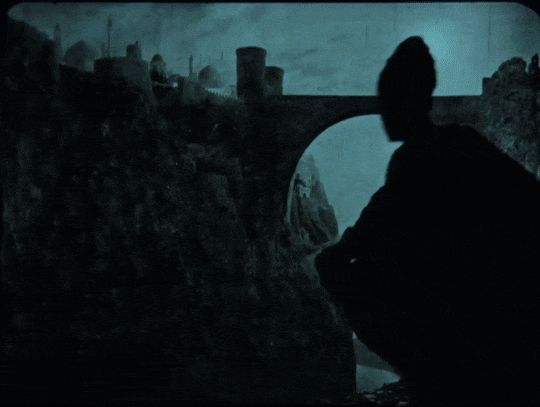
see all gifs here
Earle, knowing that traditional stills could not be taken while filming, brought in Edward S. Curtis. Curtis developed techniques in still photography to replicate the look of the photographic effects used for the film. So, even though the film hasn’t survived, we have some pretty great looking representations of some of the 1000s of missing feet of the film.

Nearly a year before Curtis joined the crew, Earle began collaboration with composer Charles Wakefield Cadman. In another bold creative move, Cadman and Earle worked closely before principal photography began so that the score could inform the construction and rhythm of the film and vice versa.
By the end of 1921 the film was complete. After roughly 9 months and the creation of over 500 paintings, The Rubaiyat was almost ready to meet its public. However, the investors in The Rubaiyat, Inc., the corporation formed by Earle to produce the film, objected to the ample reference to wine drinking (a comical objection if you’ve read the poems) and wanted the roles of the young lovers (played by as yet unknown Ramon Novarro and Kathleen Key) to be expanded. The dispute with Earle became so heated that the financiers absconded with the bulk of the film to New York. Earle filed suit against them in December to prevent them from screening their butchered and incomplete cut. Cadman supported Earle by withholding the use of his score for the film.
Later, Eastern Film Corp. brokered a settlement between the two parties, where Earle would get final cut of the film and Eastern would handle its release. Earle and Eastern agreed to change the title from The Rubaiyat of Omar Khayyam to simply Omar. Omar had its first official preview in New York City. It was tentatively announced that the film would have a wide release in the autumn.
However, before that autumn, director Norman Dawn launched a dubious patent-infringement suit against Earle and others. Dawn claimed that he owned the sole right to use multiple exposures, glass painting for single exposure, and other techniques that involved combining live action with paintings. All the cited techniques had been widespread in the film industry for a decade already and eventually and expectedly Dawn lost the suit. Despite Earle’s victory, the suit effectively put the kibosh on Omar’s release in the US.
Earle moved on to other projects that didn’t come to fruition, like a Theda Bara film and a frankly amazing sounding collaboration with Cadman to craft a silent-film opera of Faust. Omar did finally get a release, albeit only in Australia. Australian news outlets praised the film as highly as those few lucky attendees of the American preview screenings did. The narrative was described as not especially original, but that it was good enough in view of the film’s artistry and its imaginative “visual phenomena” and the precision of its technical achievement.
One reviewer for The Register, Adelaide, SA, wrote:
“It seems almost an impossibility to make a connected story out of the short verse of the Persian of old, yet the producer of this classic of the screen… has succeeded in providing an entertainment that would scarcely have been considered possible. From first to last the story grips with its very dramatic intensity.”
While Omar’s American release was still in limbo, “Ramon Samaniegos” made a huge impression in Rex Ingram’s Prisoner of Zenda (1922, extant) and Scaramouche (1923, extant) and took on a new name: Ramon Novarro. Excitement was mounting for Novarro’s next big role as the lead in the epic Ben-Hur (1925, extant) and the Omar project was re-vivified.
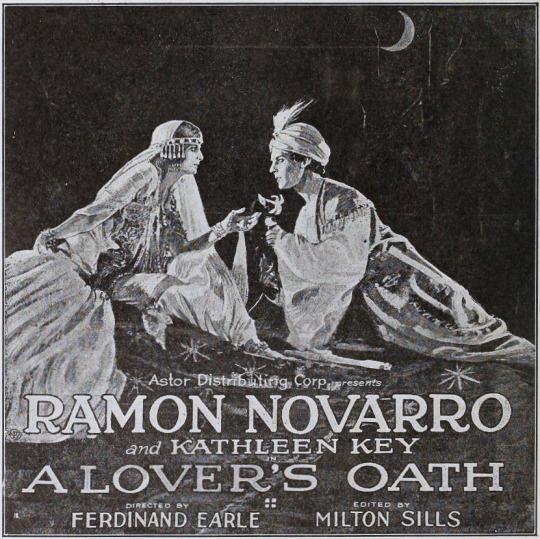
A new company, Astor Distribution Corp., was formed and purchased the distribution rights to Omar. Astor hired actor (note, not an editor) Milton Sills to re-cut the film to make Novarro and Key more prominent. The company also re-wrote the intertitles, reduced the films runtime by more than ten minutes, and renamed the film A Lover’s Oath. Earle had moved on by this point, vowing to never direct again. In fact, Earle was indirectly working with Novarro and Key again at the time, as an art director on Ben-Hur!
Despite Omar’s seemingly auspicious start in 1920, it was only released in the US on the states rights market as a cash-in on the success of one of its actors in a re-cut form five years later.
That said, A Lover’s Oath still received some good reviews from those who did manage to see it. Most of the negative criticism went to the story, intertitles, and Sills’ editing.
What kind of legacy could/should Omar have had? I’m obviously limited in my speculation by the fact that the film is lost, but there are a few key facts about the film’s production, release, and timing to consider.
The production budget was stated to be $174,735. That is equivalent to $3,246,994.83 in 2024 dollars. That is a lot of money, but since the production was years long and Omar was a period film set in a remote locale and features fantastical special effects sequences, it’s a modest budget. For contemporary perspective, Robin Hood (1922, extant) cost just under a million dollars to produce and Thief of Bagdad (1924, extant) cost over a million. For a film similarly steeped in spectacle to have nearly 1/10th of the budget is really very noteworthy. And, perhaps if the film had ever had a proper release in the US—in Earle’s intended form (that is to say, not the Sills cut)—Omar may have made as big of a splash as other epics.
It’s worth noting here however that there are a number of instances in contemporary trade and fan magazines where journalists off-handedly make this filmmaking experiment about undermining union workers. Essentially implying that that value of Earle’s method would be to continue production when unionized workers were striking. I’m sure that that would absolutely be a primary thought for studio heads, but it certainly wasn’t Earle’s motivation. Often when Earle talks about the method, he focuses on being able to film things that were previously impossible or impracticable to film. Driving down filming costs from Earle’s perspective was more about highlighting the artistry of his own specialty in lieu of other, more demanding and time-consuming approaches, like location shooting.
This divide between artists and studio decision makers is still at issue in the American film and television industry. Studio heads with billion dollar salaries constantly try to subvert unions of skilled professionals by pursuing (as yet) non-unionized labor. The technical developments of the past century have made Earle’s approach easier to implement. However, just because you don’t have to do quite as much math, or time an actor’s movements to a metronome, does not mean that filming a combination of painted/animated and live-action elements does not involve skilled labor.
VFX artists and animators are underappreciated and underpaid. In every new movie or TV show you watch there’s scads of VFX work done even in films/shows that have mundane, realistic settings. So, if you love a film or TV show, take the effort to appreciate the work of the humans who made it, even if their work was so good you didn’t notice it was done. And, if you’ve somehow read this far, and are so out of the loop about modern filmmaking, Disney’s “live-action” remakes are animated films, but they’ve just finagled ways to circumvent unions and low-key delegitimize the skilled labor of VFX artists and animators in the eyes of the viewing public. Don’t fall for it.
VFX workers in North America have a union under IATSE, but it’s still developing as a union and Marvel & Disney workers only voted to unionize in the autumn of 2023. The Animation Guild (TAG), also under the IATSE umbrella, has a longer history, but it’s been growing rapidly in the past year. A strike might be upcoming this year for TAG, so keep an eye out and remember to support striking workers and don’t cross picket lines, be they physical or digital!
Speaking of artistry over cost-cutting, I began this post with a mention that in the early 1920s, the American film industry was developing an inferiority complex in regard to its own artistry. This was in comparison to the European industries, Germany’s being the largest at the time. It’s frustrating to look back at this period and see acceptance of the opinion that American filmmakers weren’t bringing art to film. While yes, the emergent studio system was highly capitalistic and commercial, that does not mean the American industry was devoid of home-grown artists.
United Artists was formed in 1919 by Douglas Fairbanks, Charlie Chaplin, Mary Pickford, and D.W. Griffith precisely because studios were holding them back from investing in their art—within the same year that Earle began his Omar project. While salaries and unforgiving production schedules were also paramount concerns in the filmmakers going independent, a primary impetus was that production/distribution heads exhibited too much control over what the artists were trying to create.
Fairbanks was quickly expanding his repertoire in a more classical and fantastic direction. Cecil B. DeMille made his first in a long and very successful string of ancient epics. And the foreign-born children of the American film industry, Charlie Chaplin, Rex Ingram, and Nazimova, were poppin’ off! Chaplin was redefining comedic filmmaking. Ingram was redefining epics. Nazimova independently produced what is often regarded as America’s first art film, Salome (1923, extant), a film designed by Natacha Rambova, who was *gasp* American. Earle and his brother, William, had ambitious artistic visions of what could be done in the American industry and they also had to self-produce to get their work done.
Meanwhile, studio heads, instead of investing in the artists they already had contracts with, tried to poach talent from Europe with mixed success (in this period, see: Ernst Lubitsch, F.W. Murnau, Benjamin Christensen, Mauritz Stiller, Victor Sjöström, and so on). I’m in no way saying it was the wrong call to sign these artists, but all of these filmmakers, even if they found success in America, had stories of being hired to inject the style and artistry that they developed in Europe into American cinema, and then had their plans shot down or cut down to a shadow of their creative vision. Even Stiller, who tragically died before he had the opportunity to establish himself in the US, faced this on his first American film, The Temptress (1926, extant), on which he was replaced. Essentially, the studio heads’ actions were all hot air and spite for the filmmakers who’d gone independent.

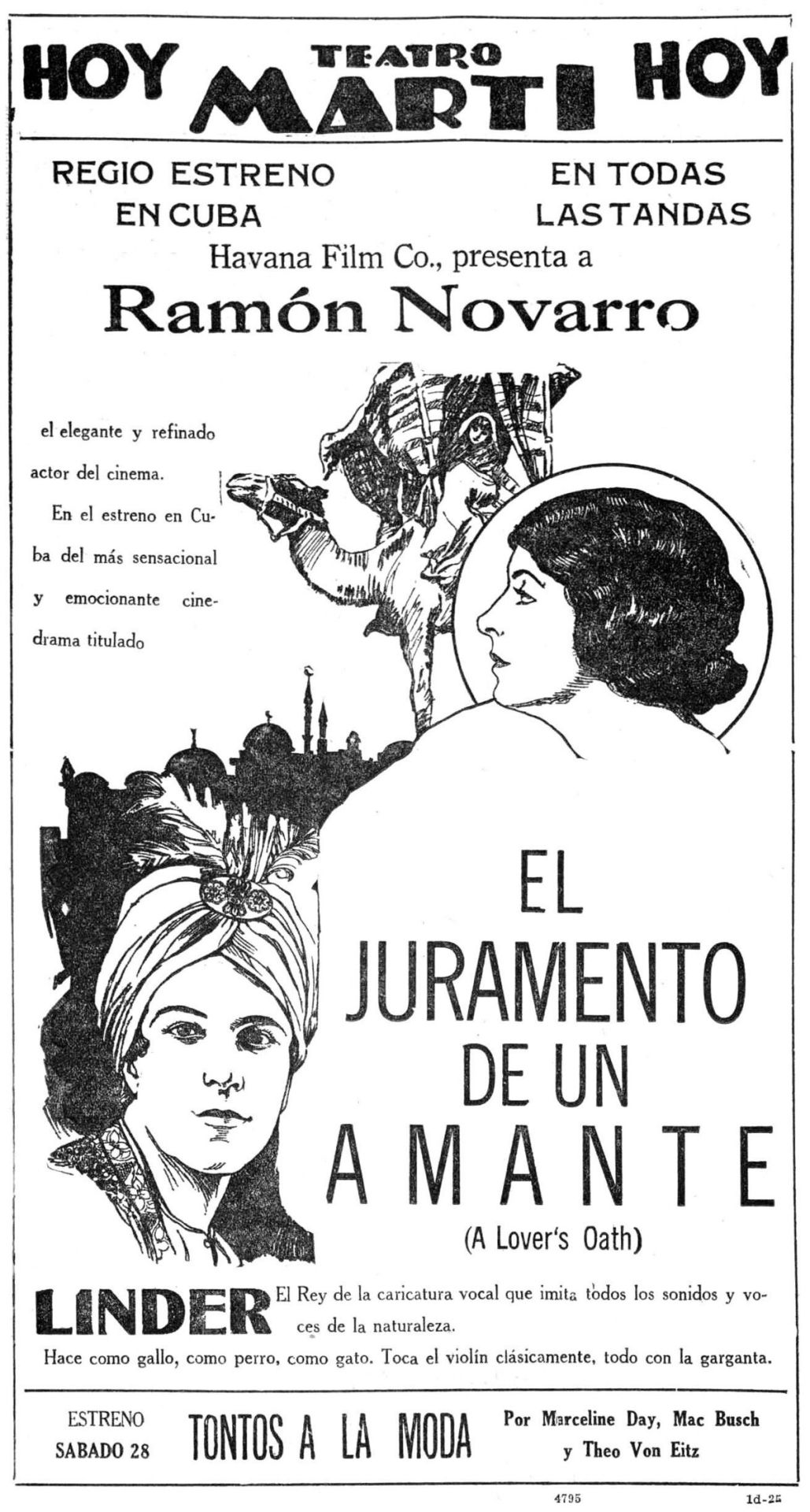
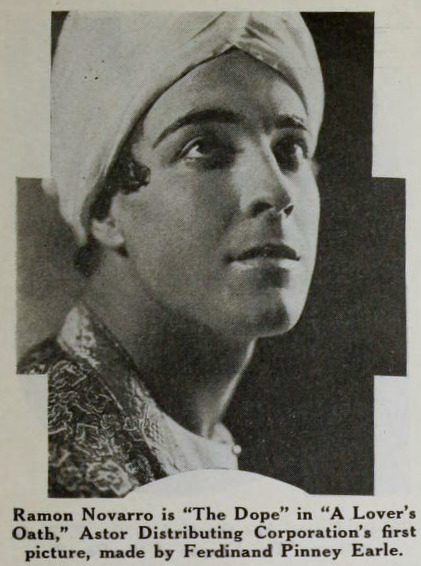
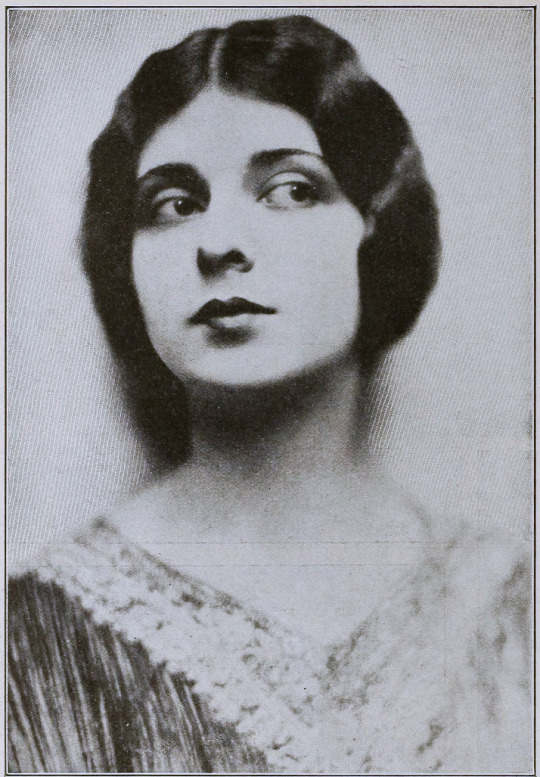
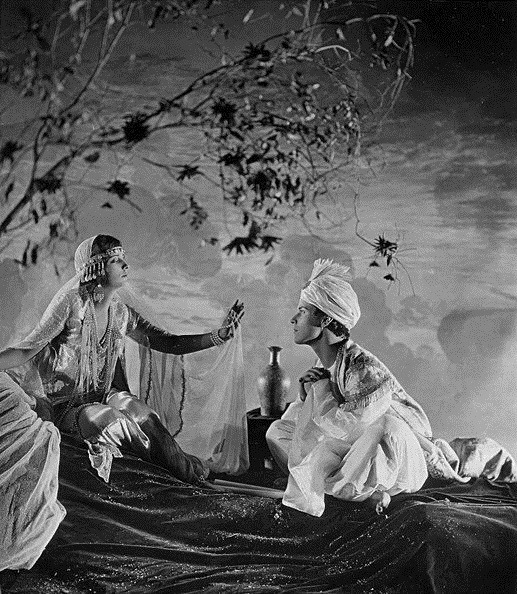
Finally I would like to highlight Ferdinand Earle’s statement to the industry, which he penned for from Camera in 14 January 1922, when his financial backers kidnapped his film to re-edit it on their terms:
MAGNA CHARTA
Until screen authors and producers obtain a charter specifying and guaranteeing their privileges and rights, the great slaughter of unprotected motion picture dramas will go merrily on.
Some of us who are half artists and half fighters and who are ready to expend ninety per cent of our energy in order to win the freedom to devote the remaining ten per cent to creative work on the screen, manage to bring to birth a piteous, half-starved art progeny.
The creative artist today labors without the stimulus of a public eager for his product, labors without the artistic momentum that fires the artist’s imagination and spurs his efforts as in any great art era.
Nowadays the taint of commercialism infects the seven arts, and the art pioneer meets with constant petty worries and handicaps.
Only once in a blue moon, in this matter-of-fact, dollar-wise age can the believer in better pictures hope to participate in a truely [sic] artistic treat.
In the seven years I have devoted to the screen, I have witnessed many splendid photodramas ruined by intruding upstarts and stubborn imbeciles. And I determined not to launch the production of my Opus No. 1 until I had adequately protected myself against all the usual evils of the way, especially as I was to make an entirely new type of picture.
In order that my film verison [sic] of the Rubaiyat of Omar Khayyam might be produced under ideal conditions and safeguarded from intolerable interferences and outside worries, I entered into a contract with the Rubaiyat, Inc., that made me not only president of the corporation and on the board of directors, but which set forth that I was to be author, production manager, director, cutter and film editor as well as art director, and that no charge could be made against the production without my written consent, and that my word was to be final on all matters of production. The late George Loane Tucker helped my attorney word the contract, which read like a splendid document.
Alas, I am now told that only by keeping title to a production until it is declared by yourself to be completed is it safe for a scenario writer, an actor or a director, who is supposedly making his own productions, to contract with a corporation; otherwise he is merely the servant of that corporation, subject at any moment to discharge, with the dubious redress of a suit for damages that can with difficulty be estimated and proven.
Can there be any hope of better pictures as long as contracts and copyrights are no protection against financial brigands and bullies?
We have scarcely emerged from barbarism, for contracts, solemnly drawn up between human beings, in which the purposes are set forth in the King’s plainest English, serve only as hurdles over which justice-mocking financiers and their nimble attorneys travel with impunity, riding rough shod over the author or artist who cannot support a legal army to defend his rights. The phrase is passed about that no contract is invioliable [sic]—and yet we think we have reached a state of civilization!
The suit begun by my attorneys in the federal courts to prevent the present hashed and incomplete version of my story from being released and exhibited, may be of interest to screen writers. For the whole struggle revolves not in the slightest degree around the sanctity of the contract, but centers around the federal copyright of my story which I never transferred in writing otherwise, and which is being brazenly ignored.
Imagine my production without pictorial titles: and imagine “The Rubaiyat” with a spoken title as follows, “That bird is getting to talk too much!”—beside some of the immortal quatrains of Fitzgerald!
One weapon, fortunately, remains for the militant art creator, when all is gone save his dignity and his sense of humor; and that is the rapier blade of ridicule, that can send lumbering to his retreat the most brutal and elephant-hided lord of finance.
How edifying—the tableau of the man of millions playing legal pranks upon men such as Charles Wakefield Cadman, Edward S. Curtis and myself and others who were associated in the bloody venture of picturizing the Rubaiyat! It has been gratifying to find the press of the whole country ready to champion the artist’s cause.
When the artist forges his plowshare into a sword, so to speak, he does not always put up a mean fight.
What publisher would dare to rewrite a sonnet of John Keats or alter one chord of a Chopin ballade?
Creative art of a high order will become possible on the screen only when the rights of established, independent screen producers, such as Rex Ingram and Maurice Tourneur, are no longer interferred with and their work no longer mutilated or changed or added to by vandal hands. And art dramas, conceived and executed by masters of screen craft, cannot be turned out like sausages made by factory hands. A flavor of individuality and distinction of style cannot be preserved in machine-made melodramas—a drama that is passed from hand to hand and concocted by patchworkers and tinkerers.
A thousand times no! For it will always be cousin to the sausage, and be like all other—sausages.
The scenes of a master’s drama may have a subtle pictorial continuity and a power of suggestion quite like a melody that is lost when just one note is changed. And the public is the only test of what is eternally true or false. What right have two or three people to deprive millions of art lovers of enjoying an artist’s creation as it emerged from his workshop?
“The Rubaiyat” was my first picture and produced in spite of continual and infernal interferences. It has taught me several sad lessons, which I have endeavored in the above paragraphs to pass on to some of my fellow sufferers. It is the hope that I am fighting, to a certain extent, their battle that has given me the courage to continue, and that has prompted me to write this article. May such hubbubs eventually teach or inforce a decent regard for the rights of authors and directors and tend to make the existence of screen artisans more secure and soothing to the nerves.
FERDINAND EARLE.
---
☕Appreciate my work? Buy me a coffee! ☕
Transcribed Sources & Annotations over on the WMM Blog!
See the Timeline for Ferdinand P. Earle's Rubaiyat Adaptation
#1920s#1923#1925#omar khayyam#ferdinand pinney earle#ramon novarro#independent film#american film#silent cinema#silent era#silent film#classic cinema#classic movies#classic film#film history#history#Charles Wakefield Cadman#cinematography#The Rubaiyat#cinema#film#lost film
51 notes
·
View notes
Text
NMTDaily: Q&A (Bea and Hero’s first Q&A video)
- Okay, I took a brief break from my rewatch liveblog, but I’m back. Let’s do this.
- “But first, tea!” Cute little teacup cheers animation and sound effect!
- Wait, also, this is another moment of Bea’s hypocrisy and the things she has in common with Ben being exposed! Miss No One Needs Tea actually IS a tea-drinker! (And Ben is still watching her videos at this point, I wonder if he noticed that…)
- Sigh. Content warning: Harry Potter. I continue to be aggressively furious with JKR. Ten years ago I would have never thought HP would become inextricable from a vitriolic hate group, and it breaks my heart every time I think about it. How trans people are suffering at the hands of that woman, most importantly. But also how she took away my ability to enjoy the series that got me through a bleak early adolescent onset of my anxiety disorders, AND she’s retroactively corrupting my comfort media by association now too. Boo. Hiss. Let’s move on.
- There IS some good character work in this Hogwarts House discussion section though. More foreshadowing of Pedro failing to live up to his brave, heroic image. Meg being a Slytherin. Bea thinking Ben would be a Muggle. It is interesting to think about what could replace this discussion today in terms of media references. I really don’t know.
- Hero being uncomfortable when Bea brings up Claudio and her being matching is interesting. I guess they aren’t officially official yet. And then she gets revenge by bringing up Benedick, lol. Perfect.
- Bea makes fun of her a bit again about the holidaying in the South of France, not really sure what to make of that.
- Bea catching that question and refusing to be tricked into saying Ben is her friend, and still refusing to watch his channel. Hilarious and plot-important.
- Arch-nemesis, what a strong word! Remember the fanart transforming Kate Beaton’s Nemesis comic to be about Ben having a photo of his nemesis Beatrice above his bed? I loved that, but now I think Beatrice should’ve been the star of her own version of that, lol.
- I love her making fun of Ben’s channel icon, because I still think that icon was a perfect character choice. Exactly the kind of deeply cringe nonsense that Benedick MuchAdo would and should do in a modern AU, I love it. And I love that Beatrice hates it. Perfect.
- “You have to pick a side, you pick my channel or you pick his!” “You do know you’re not the only two channels on YouTube?” Lol get her Hero!
- Just hollering again because Ben is definitely gonna watch this video and see Bea talking about their past I’m!!!!!
- I know what it’s like to be a kid and have a group of kids you only see during summer but who all see each other year-round, and you never feel as close to those people as they are to each other. So I understand why Bea might feel resentful that all her Auckland friends are still friends with Ben year-round, especially after she had such a falling out with him.
- “Like he does with his newest most bestest friend thing, he latched on to me as the other new kid in the group” MY HEART.
- Ben was clearly still struggling with being the new kid, and saw someone who related a bit to that and wanted to bond over it! Oh my GOD he is just the embodiment of the Puss-in-Boots-being-a-cute-kitten-with-huge-wet-eyes gif to me and I cannot help being absolutely in love. Protect this lonely baby!!!!!
- HE KNEW SHE WAS LEAVING AT THE END OF SUMMER. He was ripping off the band-aid early by pushing her away. We know he genuinely didn’t know his feelings for her were romantic at all at the time, so all Ben knew was Bea was trying to get closer to him right as he was about to lose her, and he was giving them both an out because it already hurt too much to lose her!!!!! (A HUGE parallel to his behavior of pushing her away ahead of losing her to travel in Lovely Little Losers by the way.)
- And poor Beatrice. She’s already used to maintaining friendships from eight hours away. She would have just taken for granted that she and Ben were going to stay in touch after she went home to Wellington, like she always did with Hero and Pedro. But she also knew she had a crush on Ben, and as soon as she tries to put herself out there in a messy 14-year-old way and create more situations where they’re alone together, Ben starts saying friendships die in three days. Because he doesn’t believe it’s possible to be friends from eight hours away, so why try? And Bea thinks he doesn’t care about her at all and she’s heartbroken.
- If Ben had only been able to communicate that he was scared because he liked her so much and insecure because he’d never had a friend who actually bothered to stay in touch before. If Bea had been able to listen without having her feelings hurt, and actually communicate her own feelings. If they both weren’t terminally fourteen years old about this, they could’ve been friends this entire time.
- Beatrice is SO heartbroken by Ben’s rejection that in the past 3 or 4 YEARS since this went down, she never talked to Hero about it before this video. Not once. And she tells Hero everything. That’s huge.
- “You know my life story now.” That’s how she phrases it. This friendship breakup is a defining event in Beatrice’s life so far. It’s the heartbreak of her life. No wonder she’s so adamant about hating him.
- “Traveling is going to be on the agenda in the next few years” and we already have the setup for Lolilo, not even halfway through NMTD.
- Like really, Lolilo is basically Ben and Bea having the same fight and making the same mistakes as they did when they were fourteen, and yet again finding their way back to each other, finally mature enough to never make the same mistakes a third time.
- Art Curator and Queen of the World. These precious girls.
- Beatrice wants to do something that challenges her and makes her think. She doesn’t want easy street. I love that. (Enjoying a challenge, enjoying learning and thinking, another thing that also applies to Ben.)
- Bea and Hero get along because they have the same sense of humor and they grew up together, they have history. Shows what they value in any kind of relationship, platonic or otherwise.
- I love Hero being sad at the idea of a world where she doesn’t know Bea, she’s so sweet. And Bea finding that emotional stuff gross is also perfect.
- “I think you have more in common with Ben that you do with me.” “Hero I’m going to kill you right now.” Perfect.
- Godddddd the pale blue dress I’m already in pain. Knowing what’s coming just ughhhhhh
- The beaded necklace! I love these two so much, we love sisterhood (cousinhood, you know what I mean)
- Ohhhhh St Miranda’s! I just got it, that’s a The Tempest reference and the magician principal is Prospero, or more likely Prospera a la the movie. I don’t think I had seen or read The Tempest yet when I first watched NMTD, so that went over my head. I knew it was a Shakespeare reference but it’s only now that I understand it.
- (About Pedro) “I can be myself around him, we just know each other really well” and again I’m in PAIN augh the foreshadowing
- Do we think Bea really doesn’t know that her name means Blessed? Interesting. Love that they worked that detail in.
- Saying goodbye in German? Well Hero is clearly a Sound of Music fan, lol. Well, that or Cabaret, but she strikes me as a Sound of Music girl.
- Reminding the audience that we don’t really know her outside of this channel, thanking everyone for their kindness and good questions, backhanding the ones who asked about Ben with “MOST of the questions were really good and not annoying at all”. Lol, way to model a mostly healthy relationship with your audience, Bea! I mean that genuinely. Boundaries are important. Even though you’re fictional.
- “Why are you watching us? We’re not that interesting.” This line will be paralleled somewhat in Bea and Hero’s final video.
- And all their favorite YouTubers in the description box! Mostly OG British YouTubers I haven’t thought about in years. That was a blast from the past!
- Thank you comment section for pointing out that Hero chose to include a question sent in by Benedick! She left out his name so Bea wouldn’t notice, but he’s the one who asked “how much of yourself do you put in your videos” and Bea said it was an interesting question. I love that.
- He wants to know how genuine the things she says in her videos are and he wants advice as a fellow YouTuber at the same time, and she lets him know that she’s for real. That has to hurt given the things she’s said about him, but he could also take from this video that he matters to her, or she wouldn’t still be so upset about their falling out. Whether he does understand that from this video is another question- probably not. Not yet.
- Someone in the comments, AlashiaTuol, is a genius, pointing out that Bea jokingly telling Hero to pick a side between herself and Ben is a direct parallel to a much more serious “pick a side” conversation Ben is going to have. I love that call.
- Another commenter said what I’m always thinking when I rewatch this series: “I’m so glad this exists!”
💖🥭🦩
#nmtd#nmtdaily#beadick#otp: team blessed#violivs nmtdaily liveblog#Bea and Hero’s first Q&A#nmtd and lolilo spoilers in this one to some degree
6 notes
·
View notes
Text
ive always been a claudio muchado hater for his crimes against hero but I gotta hand it to him, must be crazy to go from thinking your fiancée cheated on you to thinking she died to finding out she didn’t cheat on you to agreeing to marry her cousin to finding out she’s actually still alive and marrying her after all. and then you can’t even process that because the two clowns you set up as a joke before all that have just gotten engaged for real
2 notes
·
View notes
Text
Also, in a play that is about the instability of shallow declarations of love or friendship… it’s a really important tonal shift in that scene.
They’ve had the tender weepy scene, he has committed himself to Hero’s cause (although he does not necessarily believe her innocence), they have awkwardly and wittily declared their love for each other and have grabbed a moment’s gentleness in an absolute bastard of a day. So it is that for one moment, exuberant with emotion, Benedick plays the hyperbolic lover.
Remember, this is the guy who pulled, “aye, and a box to put it in,” at Claudio’s “can the world buy such a jewel” nonsense in the first act. The guy to whom big, overstated demonstrative behaviour is the most ridiculous thing, declared, “Come, bid me do anything for you!”
It is pure, lovers’ nonsense. It brings the scene up fro the depths of despair back in to the realm of comedy. It is rushing, impulsive, and - on a deep level - insincere.
And Beatrice - “a star danced” Beatrice, the funniest character in the play, who has turned down a Prince with a sweet joke, who has laughed off all other ills, responds with absolute, deadly seriousness:
Kill Claudio.
She is demanding something not encompasses by the conventions of “players love.” Not grand feats of glory of adoration, not even Knight Errant stuff - she is asking a man to kill his best friend, on the word of a woman.
The wording is so stark. She is rejecting, directly, all pretty words and promises and vows of love. She is not asking Benedick to defend Hero’s honour, to fight a duel, to be a champion. She wants bloody vengeance. She wants murder done.
And in that moment, Muchado hangs in the balance of comedy and tragedy.
Crucially, Benedick does not immediately acquiesce. They argue, and it is not the playful sparring of their witty battles - she barely lets him say her name. He falls back on all the empty, lovers’ tropes (“by this hand I love thee”) and she holds him to them (“Use it for my love some other way than swearing by it.”)
This is a play that hinges on the difference between seeming and reality, between words and actions, between promises and truths, and we have been shown over and over how easily people can be deceived.
And Beatrice knows this. Sitting there, weeping, she knows that words mean nothing without action to back them up. That love, constancy, devotion have meaning only in action.
Which, is the glimmer of hope that takes us off this knife-edge to a happy ending. If people are willing to back up their protestations with meaningful action, change can happen. Friends can be true, lovers can be faithful, repentance can be sincere, and marriages can be happy.
Which, if you missed it here, comes up again in the last scene, when B&B both deny their feelings for each other out of embarrassment, but are betrayed by material proofs of their love - to which those who care about them can attest.
Words are nothing. They can cause all sorts of problems, but to solve things, sometimes you need to act.
so many things try to emulate the Beatrice/Benedick relationship and so few of them get it right bc they’re like ‘oh it’s about the banter’ and YES, obviously, but if you make it JUST about the banter you’re going to fail! it’s about the RESPECT!!! it’s about the scene after Hero’s shaming where Benedick drops the banter entirely and sits there with Beatrice as she rages and weeps and then chooses to side with HER instead of the boy’s club that he’s been hanging out with for the entire play, both because he loves her and because she’s RIGHT!
like, it’s not some impulsive thing to make her like him, and it’s not just talk; he asks her if she’s sure and then he agrees and then he remains cold and determined when he meets Claudio and Don Pedro and they try to get him to joke around with them like old times. i think that’s one of the things that gets me the most; that there’s a scene that you half-expect to fall into that same sort of joking, where Claudio and Don Pedro are specifically like, “Huh, we inexplicably feel kind of sad after ruining this woman’s life and reputation, I bet Benedick will cheer us up!” and he just. utterly refuses to engage. and it’s so powerful and it’s such a tonal shift and such a strong indication of just how much he loves and values Beatrice and!! anything that gets the banter but doesn’t get that completely fails to understand their relationship! THB!!
14K notes
·
View notes
Text
how has no one cast me as beatrice muchado yet. cmon guys.
0 notes
Text
Quien se haya muchado conmigo en Fiestas de Quito, tiene asegurada su fundita de caramelos para navidad.
0 notes
Text

Celebrating 10 Years of NMTD 🦩🥭
Join the Much Ado About Nothing crew as they navigate high school in New Zealand at the height of superwholock. It's 2014 and you've got nothing much to do...
#nmtd#NMTDaily#nothing much to do#much ado about nothing#pedro donaldson#vote for pedro#dracula daily#misha collins#substack#shakespeare#shakespeare adaptation#webseries#vlogseries#youtube#maan#muchado#superwholock#new zealand#aotearoa#i miss 2014#2014 nostalgia#2014 revival#2014 tumblr#poll#lolilo#lovely little losers#the candle wasters#all round great guy#all round great bi#poll didn't work on the og post so that's being rb'd tomorrow
50 notes
·
View notes
Text
Fear not! You can download it here:
love-in-the-time.tumblr.com/muchado
Anybody know where I can find Much Ado About Nothing (2011) , the one with David Tennant and Catherine Tate? It was taken down from YouTube and now it behind a fucking paywall 😒😒😟
22 notes
·
View notes
Note
I'm loving your TMA Shakespeare thoughts! Why do you think Beatrice would serve the Eye and Benedick would serve the Lonely?
ah yay i’m glad!! that particular arrangement started as a joke post about elias and peter, but the more i think about it the more i like it for them.
beatrice’s main flaw is that she’s judgmental and critical. she prides herself on her wit and her lack of involvement, the fact that she’s an observer rather than a participant in the culture of courting and familial duty. she considers herself above it, and she considers that a mark of her own wisdom and acuity.
her aversion to marriage is founded in her aversion to being controlled. she does foster real relationships, though: she loves her cousin and her uncle genuinely and engages with them as equals, even as she exalts herself for being free of the system they perpetuate.
she values knowledge, truth, she thrives on being one who knows people, one who is trusted with sensitive information. she’s all about “i’ve a good eye, uncle; i can see a church by daylight” and “disdain and scorn ride sparkling in her eyes, misprising what they look on” and “he is now as valiant as hercules who only tells a lie and swears it.”
benedick’s main flaw is that he’s fickle in interpersonal relationships. he’s obnoxiously, vocally against forming any kind of romantic attachment, and though he seems to be loyal to his friends, his allegiance is fleeting: “he wears his faith but as the fashion of his hat.”
he’s also quite critical of people at times, but only insofar as they interfere with his own comfortable way of living. he judges hero harshly because she threatens his friend’s bachelorhood, not because he actually has anything against her. he trades barbs with beatrice because they’re too similar in all the wrong ways, and she threatens his solitude by being perfectly companionable.
his perpetual alienation isn’t for any particular reason to do with other people; it’s his own issue. he refuses to marry because he believes that he would never be happy or comfortable in a marriage, and he won’t subject another person to what he would become in that situation: “because i will not do them the wrong to mistrust any, i will do myself the right to trust none.”
and then when you put them together, you get beatrice’s shrewd judgment with benedick’s fear of attachment: “but that my lady beatrice should know me, and not know me!” you get the masterful manipulation of their insecurities to make them realize and admit their love: beatrice is said to be too judgmental to accept benedick’s love, benedick too prideful for beatrice. they say she will receive his love with criticism, and he will receive hers with mockery.
you get “i do suffer love indeed, for i love thee against my will” and “to bind me or undo me, one of them” and “a miracle! here’s our own hands against our hearts,” because this love goes against everything they profess and stand for, but it’s true and deep; they love each other despite themselves. the progression of their relationship is about beatrice learning how to let herself be vulnerable and benedick learning how to let himself care and be cared for.
whereas beatrice has thus far fostered relationships with a largely one-way flow of knowledge, put herself above those in her life and tried to know them without being known herself, she has to let benedick know her. and whereas benedick has always compensated for his insecurities and trust issues by putting distance between himself and others, he has to let beatrice prove to him that love is worth it.
13 notes
·
View notes
Text
Beatrice: I don’t want to get married. Boys are stupid
Benedick: No one wants to marry you
Beatrice: Good
Leonato: Not with that attitude
Beatrice: I don’t care
Don Pedro:
Hero:
Leonato:
Claudio:
Hero: Benedick likes you
Beatrice: OMG DID HE SAY THAT OMG I THINK I LOVE HIM!!
#shakepeare#whyisthisme#why is this me#muchado#much ado#much ado about nothing#shakepeare memes#shakepeare meme#somehow relatable#shakepeare relatable#incorrect quotes#incorrect shakespeare
27 notes
·
View notes
Video
instagram
WE'VE LAUNCHED! 🙌 DONATE & SHARE: www.crowdrise.com/much-ado Oh hey there, hi. We're the ones you invited to your costume party last year? Two of us dressed as exit signs and the third as a bear, and the bear spent the entire evening pursuing/running after the exit signs? Yeah, that was us. We want to invite you our house party, at which you'll witness a funny, modern, feminist take of an ol classic: "Much Ado About Nothing." Whether your copy of Shakespeare's canon is held together with duct tape (like ours) or collecting dust in your grandmothers attic, this is going to be a hilarious, theatrical, escape-room-esque experience you'll never forget. We need your help to make this project happen! There are three ways to support us: DONATE: 5 minutes and $5 goes a long way... and more than $5 goes even further! We offer some wicked awesome rewards for every tier... like your very own masquerade mask that you can wear at the show! Check those out at the link above. SHARE: If you can't give this time around, it's all good, you can still help! You can share this page, and this video on all your social media feeds. Statistically we're more likely to earn more donations, every time someone shares the link! ATTEND: Come see the show!! Tickets go on sale August 1st. Keep in mind that this show has a small audience capacity, so don't wait to get tickets! If you'd like a reminder, send us an email at [email protected]. DONATE & SHARE: www.crowdrise.com/much-ado THANK YOU!!! <3 <3 <3 Warmly, Caitlin & the Ensemble #muchado #ensomuchado #donate #supportthearts #muchadoaboutnothing #feministtheater #sitespecifictheater #awesomeportland #spreadthelove #makeadifference https://www.instagram.com/p/BzEVWtshTwZ/?igshid=zpldzs3yqm4w
#muchado#ensomuchado#donate#supportthearts#muchadoaboutnothing#feministtheater#sitespecifictheater#awesomeportland#spreadthelove#makeadifference
1 note
·
View note
Text
Nothing Happened, by Molly Booth
This is a very good YA adaptation of Shakespeare’s Much Ado About Nothing, set at a summer camp in Maine. Most of the main characters are counselors at the camp--i.e., teenagers. Different chapters are told from different characters’ points of view.
[spoilers below for both the play and the novel]
In this adaptation, Bee and Hana live year-round at Camp Dogberry, but during the summer their family runs the camp, and Bee (18) and her younger sister Hana (16) are among the counselors. Donald and Ben are one year older than Bee, just done with their first year of college, and unexpectedly back to work one more summer at the camp. Bee and Ben have not recovered from misunderstandings after having secretly hooked up the previous summer; Hana and Claudia (17, I think) have been flirting via text.
Claudia’s insecurity and inexperience lead to Donald talking to Hana to get them together. John’s motivations are a bit different from in the play: he is interested in Claudia himself, which is why he is so invested in breaking her up from Hana. He doesn’t “get it” when Claudia rejects him by being vaguely uninterested. He doubts that Claudia and Hana have actual feelings for each other and homophobically assumes that they’re just hooking up as a “typical” young female experimentation. The whole thing blows up into a public humiliation of Hana (who is still in recovery from a major depression after being dumped by a boyfriend a few months ago), but no physical violence and no actual condemnation by the parents.
However, the rumors fly wildly among the kids, and Hana is condemned by nearly everyone as a cheater, with Claudia garnering sympathy as the one betrayed. Hana hides in her parents’ house instead of sleeping in the cabin with the kids, and stops teaching swimming like she normally does, and stops doing all the activities that normally keep her anxiety under control. Eventually there’s a public exculpation of Hana; most of the guilty parties apologise (John has run off by then; he only came back to camp because he wanted to date Claudia, though it’s possible his father also insisted) and Hana is happy to no longer be harassed.
Partly because Claudia has suffered bullying herself at school for being queer (and does not appear to have supportive parents) and partly because she was tricked and actually had slightly more evidence than Claudio does in the play, her eventual reunion with Hana doesn’t feel as gross as it does in the play... but perhaps the main reason is that although Hana hadn’t cheated on Claudia with her ex-boyfriend, she had been texting him and hadn’t been honest with Claudia about that.
Bee and Ben’s story unfolds a bit out of order--the story of the night they hooked up the previous summer is told gradually in flashbacks from their different points of view, and the story of how they finally get back on the same page this summer is a pretty faithful retelling of the play. Their backstories are delved into a little in the flashbacks (Ben’s stepfather is somewhat abusive; Bee used to try to run away from home when she was little because she felt so out of place [she was adopted and the only nonwhite kid in town], but her parents would always help her pack her backpack and put in a note saying how much they loved her and hoped she would come back, so she always did come back before she got very far), and the closeness that led up to their hooking up feels like a real loss in the face of Bee’s hostility to Ben, who clearly does have feelings for her.
Bee’s close relationship with her sister is the best. The night when Hana (having failed to convince her parents to let her leave in order to avoid Claudia after the breakup) tries to sneak away to see her ex-boyfriend, she finds her backpack packed for her with a note from Bee saying how much she loves her.
All in all, I thought this was an excellent retelling of the play, and one that shows the dangers of rumor-mongering and the importance of communication, trust, and respect. Bonus points for a few characters of color (Bee was adopted at age 5 from Ethiopia; Donald is black; and possibly some other characters I’ve forgotten) and for queer representation: Hana is bi or pan (she herself isn’t sure which label she prefers), Claudia is apparently mainly or exclusively interested in women, and two minor male characters hook up, plus the adult drama teacher is gay.
#nothing happened#muchado#in my family we abbreviate much ado about nothing to muchado#pronounced spanishly#shakespeare#adaptation#books
3 notes
·
View notes